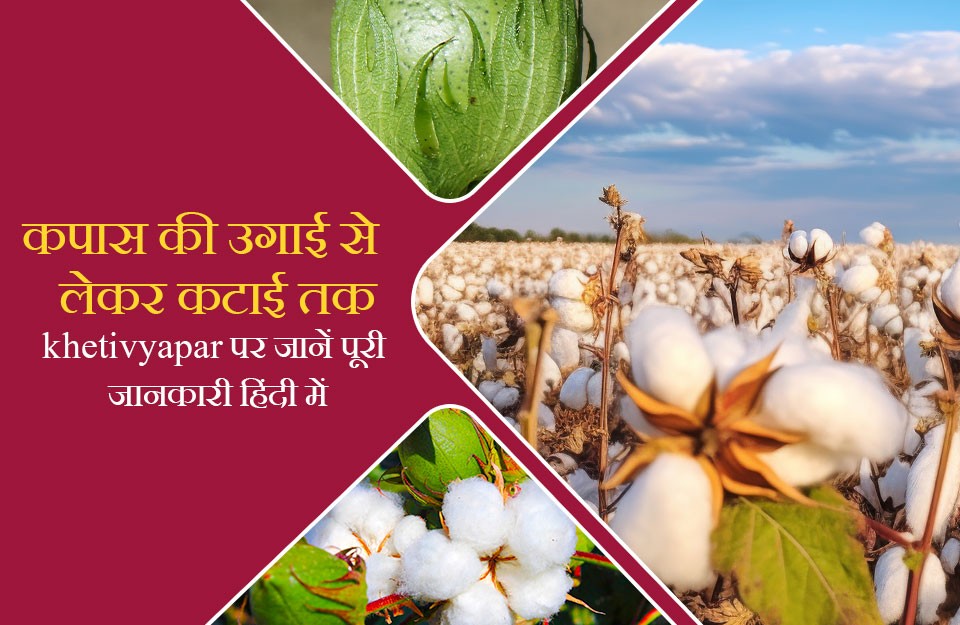By khetivyapar
Posted: 30 Apr, 2024 12:00 AM IST Updated Thu, 02 May 2024 05:33 AM IST
Cotton harvesting is a crucial process in India's agricultural sector, given the country's status as one of the largest cotton producers globally. The process encompasses several steps, including planting, monitoring maturity, harvesting, ginning, post-harvest processing, storage, transportation, and value addition. This comprehensive process holds significance for both India's agricultural and textile industries. Today, khetivyapar offers you a detailed guide on the cotton harvesting process.
- Cotton Planting: Cotton plants are meticulously prepared and cultivated in fertile soil, typically in states like Gujarat, Maharashtra, Punjab, Haryana, and Andhra Pradesh. The planting process commences with sowing seeds in rows, followed by irrigation, weeding, and pest control.
- Flowering and Fruit Development: About 4-5 months after planting, cotton plants initiate flowering. The blossoms subsequently transform into bolls, which are the cotton plant's fruits containing cotton fibers.
- Maturity Monitoring: Farmers assess the maturity of bolls by inspecting their color and appearance. When the bolls transition from green to light brown or brown, they are deemed ripe for harvesting.
- Harvesting: In India, cotton can be harvested manually or mechanically. During manual harvesting, farmers employ sickles or knives to sever bolls from the plants. Mechanical harvesting entails the use of specialized machinery to cut entire plants and separate the bolls.
- Ginning: Following harvesting, cotton bolls are transported to ginning facilities, where seeds are mechanically separated from the cotton fibers. The ginned cotton is subsequently graded based on its length, strength, and color.
- Post-Harvest Processing: After ginning, further processing ensues to eliminate any impurities from the cotton fibers, cleanse them, and package them for sale in domestic or international markets.
- Storage and Transportation: Processed cotton is stored in warehouses or storage facilities, awaiting transportation to textile mills or export terminals.
- Value Addition: Cotton undergoes additional processing in textile mills to manufacture various products such as fabrics, yarn, and other cotton-based materials.
